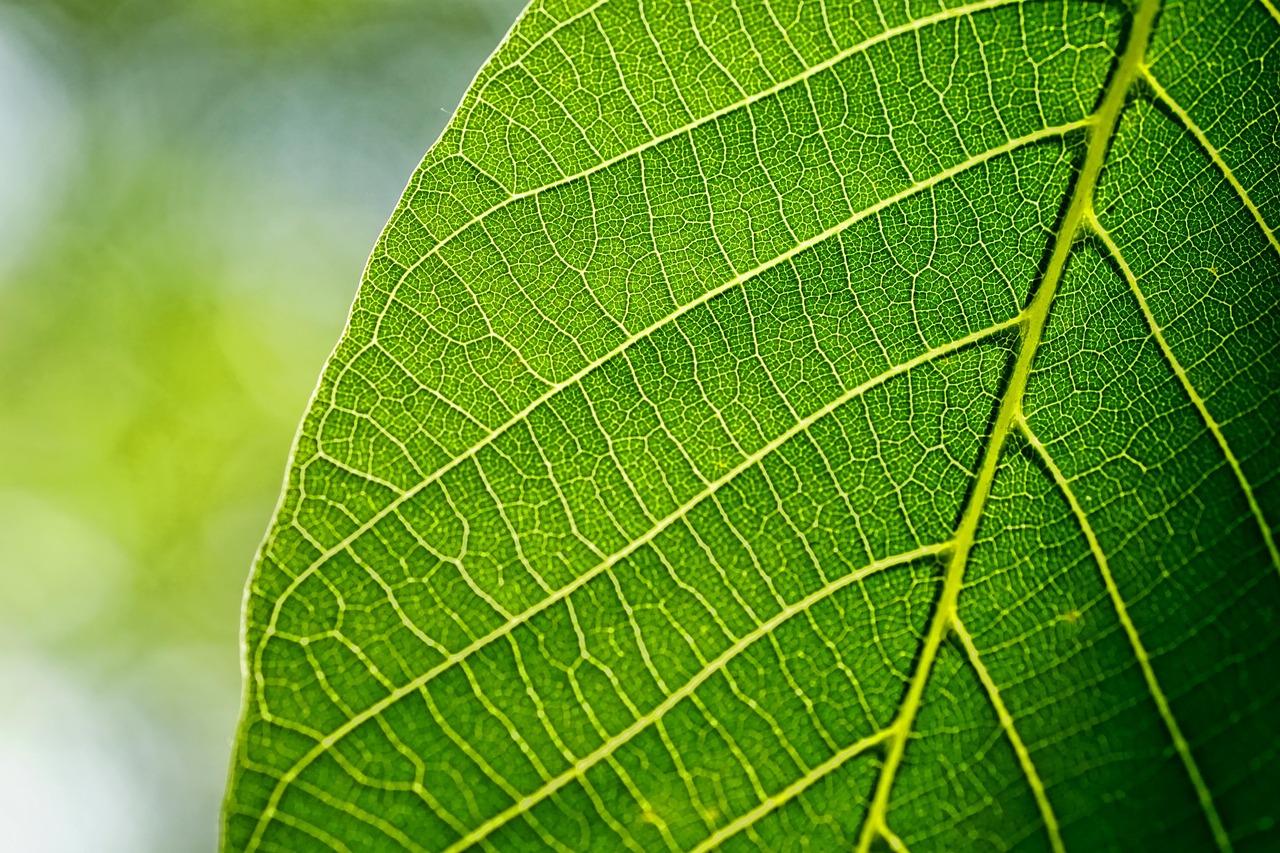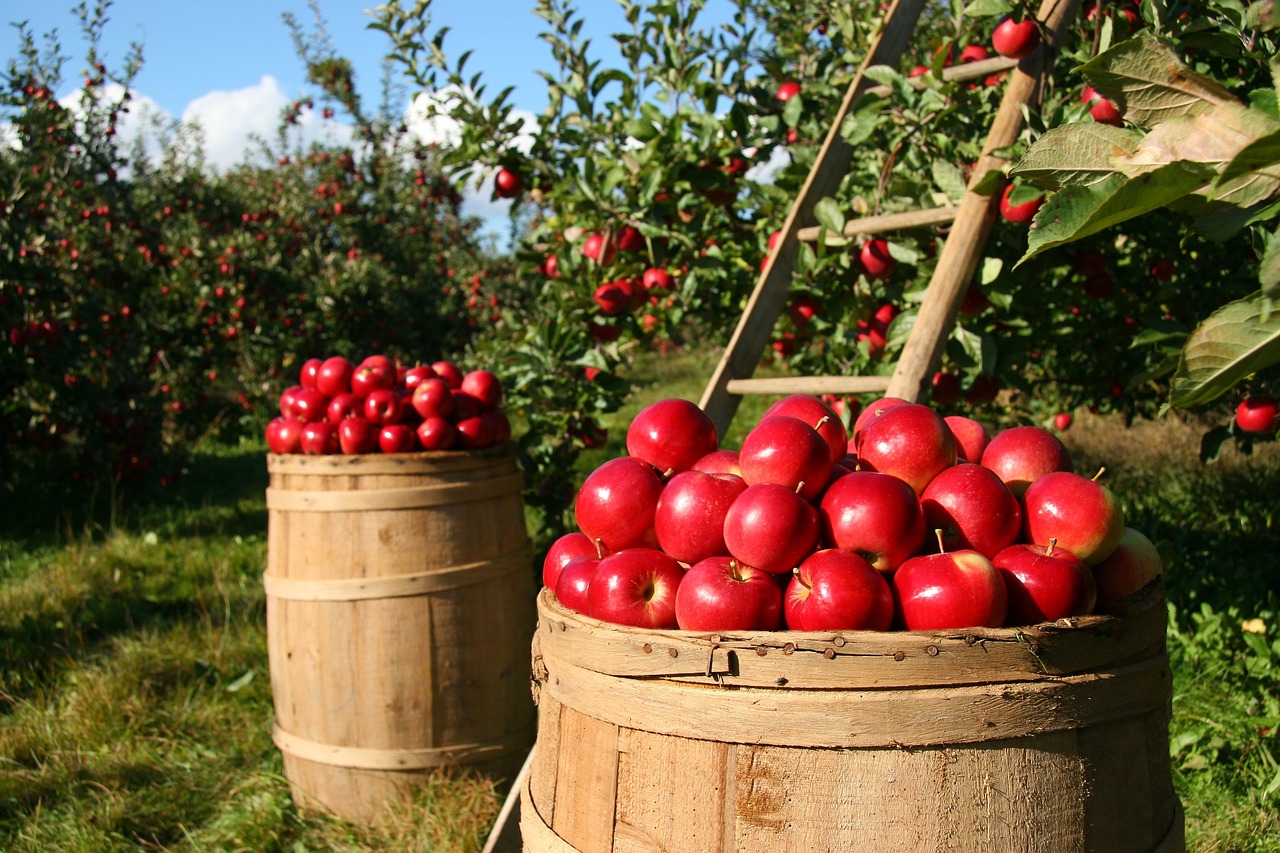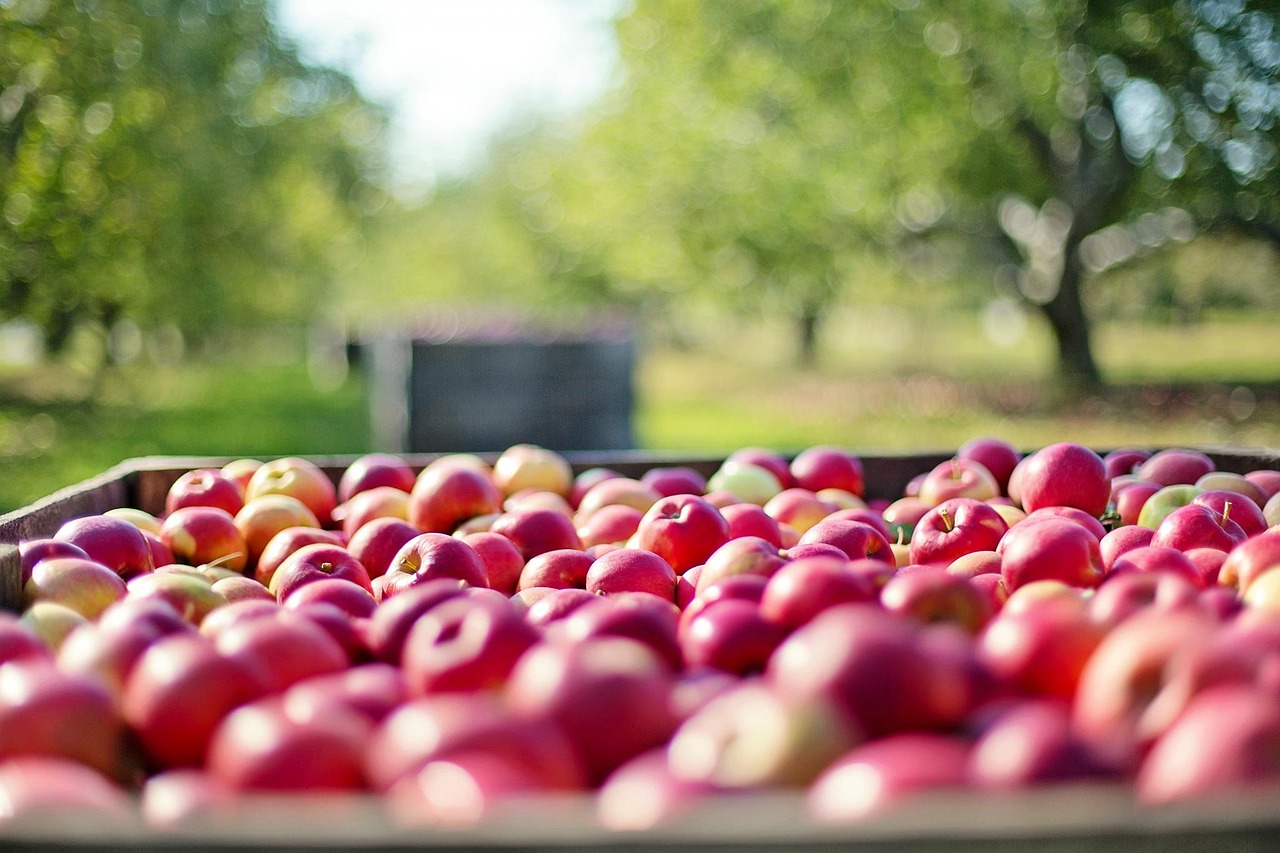Walnut orchard pruning is essential for maximizing timber harvest profitability. Proper pruning techniques enhance tree structure, improve light penetration, and promote healthy growth, leading to higher quality wood and increased yields over time.
Walnut trees, particularly the English walnut (Juglans regia), are prized not only for their delicious nuts but also for their high-quality timber. As the demand for walnut wood continues to rise, orchard management practices become increasingly important. Pruning is a critical aspect of walnut orchard management that can significantly impact the profitability of timber harvests. Understanding the principles and practices of effective pruning can help growers achieve optimal results.

Pruning is more than just cutting branches; it involves careful planning and execution to shape the tree’s growth and health. The timing, technique, and tools used in pruning all play crucial roles in determining the outcomes. When done correctly, pruning enhances the tree’s overall structure, allowing for better air circulation, light exposure, and nutrient uptake. These factors contribute to healthier trees that can produce higher quality timber.
Importance of Pruning in Walnut Orchards
There are several reasons why pruning is essential in walnut orchards. Each reason plays a significant role in enhancing the overall value of the timber produced:
- Improved Tree Structure: Pruning helps develop a strong central leader and evenly spaced branches. This structure is vital for supporting heavy fruit and nut loads.
- Enhanced Light Penetration: Removing excess branches allows sunlight to reach all parts of the tree, promoting better growth and nut quality.
- Increased Air Circulation: Good airflow reduces the risk of diseases and pests that can affect tree health and timber quality.
- Higher Timber Quality: Well-pruned trees tend to produce straighter, more uniform trunks that are more valuable in the timber market.
- Efficient Use of Resources: By focusing the tree’s energy on fewer branches, growers can ensure that nutrients are used effectively for growth.
Effective pruning techniques vary depending on the age of the trees and their specific needs. Young trees require different approaches compared to mature ones. Understanding these differences is crucial for successful orchard management.

Types of Pruning Techniques
There are several types of pruning techniques used in walnut orchards. Each technique serves a specific purpose and should be applied based on the growth stage of the trees:
- Training Pruning: This technique is applied to young trees to shape their structure. It focuses on establishing a strong framework that will support future growth.
- Thinning Pruning: Thinning involves removing selected branches to reduce competition within the tree. This promotes better light penetration and airflow.
- Heading Back: This technique shortens branches to encourage lateral growth. It is often used to control tree height and maintain a manageable shape.
- Renewal Pruning: This method targets older trees by removing unproductive or diseased branches. It revitalizes the tree and encourages new growth.
The choice of technique will depend on various factors including tree age, health, and desired outcomes. Growers should regularly assess their trees to determine which pruning methods are most appropriate.
Timing of Pruning
The timing of pruning is equally important as the techniques used. Pruning at the right time can minimize stress on the trees and promote healthier growth. Generally, walnut trees should be pruned during their dormant season, late winter to early spring before new growth begins. This timing helps prevent sap loss and reduces the risk of disease.

However, some specific situations may require adjustments to this general rule. For instance, if there are signs of disease or damage, immediate pruning may be necessary regardless of the season. Additionally, light pruning can be performed throughout the growing season to remove dead or damaged wood without significantly impacting the tree’s health.
| Pruning Type | Best Timing | Purpose |
|---|---|---|
| Training Pruning | Late Winter | Establish tree structure |
| Thinning Pruning | Early Spring | Improve light penetration |
| Heading Back | Early Spring | Control height and shape |
| Renewal Pruning | Dormant Season | Revitalize older trees |
Understanding these aspects of pruning will equip walnut growers with the knowledge needed to enhance their orchards’ productivity and profitability. As the practices evolve with advancements in agriculture technology, staying informed is key to successful walnut timber management.
Tools and Equipment for Pruning
Having the right tools is essential for effective walnut orchard pruning. Proper equipment ensures that cuts are clean and precise, which promotes quicker healing and reduces the risk of disease. Below are some common tools used in walnut pruning:
- Hand Pruners: Ideal for small branches, hand pruners offer precision and ease of use. They should be sharp to ensure clean cuts.
- Loppers: These are useful for medium-sized branches. Loppers provide greater leverage than hand pruners, making them suitable for cutting thicker limbs.
- Pruning Saws: For larger branches, a pruning saw is necessary. These saws come in various designs, including folding and fixed types.
- Pole Pruners: These extendable tools help reach high branches without the need for ladders. They combine a saw and a cutting blade.
- Safety Gear: Always wear gloves and protective eyewear when pruning to prevent injuries from falling branches or sharp tools.
Maintaining your tools is crucial for their effectiveness. Regularly sharpen blades and clean any sap or debris to ensure optimal performance during pruning sessions. Using well-maintained tools not only improves the quality of pruning but also makes the process safer and more efficient.

Pruning Techniques for Different Tree Ages
Different stages of a walnut tree’s life require tailored pruning techniques. Understanding how to approach pruning based on the age of the tree is essential for maximizing timber yield.
Young Trees (1-5 Years)
For young walnut trees, training pruning is critical. This ensures that they develop a strong framework. Key practices include:
- Selecting a Leader: Choose a dominant central stem to promote vertical growth.
- Branch Selection: Leave 3-5 well-spaced lateral branches to establish a strong structure.
- Regular Monitoring: Check the tree’s growth regularly to adjust pruning as needed.
Mature Trees (5-15 Years)
Mature walnut trees benefit from thinning and heading back techniques. The focus shifts to maintaining health and productivity:
- Thinning: Remove congested branches to improve light exposure and airflow. This helps in preventing diseases.
- Heading Back: Shorten long branches to encourage lateral growth and maintain a balanced shape.
- Assessing Health: Look for signs of disease or damage and prune accordingly to maintain vigor.
Old Trees (15+ Years)
Older trees may require more intensive renewal pruning. This process revitalizes the tree and ensures continued productivity:
- Removing Dead or Diseased Wood: Cut out any unproductive branches to redirect energy into healthy growth.
- Encouraging New Growth: Focus on cutting back older wood to stimulate new shoots that can produce fruit and nuts.
- Light Thinning: Thin out some branches while retaining enough foliage to support the tree’s health.
Pest and Disease Management During Pruning
Pest and disease management is an important consideration during the pruning process. Pruning can expose trees to infections if not done carefully. Here are some strategies to mitigate these risks:
- Sanitize Tools: Always clean your tools before and after use to prevent the spread of pathogens.
- Timing Matters: Avoid pruning during wet conditions, as this can increase the likelihood of disease transmission.
- Disease Inspection: Regularly check for signs of pests or diseases throughout the growing season. Early detection allows for timely intervention.
If pests or diseases are detected, it may be necessary to consult a professional arborist or local agricultural extension service for appropriate treatment options. Using integrated pest management (IPM) techniques can also help reduce the impact of pests while promoting overall tree health.
The Role of Nutrition in Tree Health
Nutrient management is crucial for maintaining the health of walnut trees, especially after pruning. Proper nutrition helps trees recover quickly from pruning stress and promotes vigorous growth. Important nutrients include:
- Nitrogen: Essential for leaf and branch growth. A nitrogen-rich fertilizer can support recovery after pruning.
- Phosphorus: Promotes root development and flowering, crucial for overall tree health.
- Potassium: Enhances disease resistance and improves fruit quality.
The application of fertilizers should be based on soil tests to determine existing nutrient levels. Additionally, organic amendments such as compost can improve soil structure and health over time, providing a sustainable approach to nutrition management in walnut orchards.
Caring for walnut trees requires a comprehensive understanding of pruning techniques, timing, proper tools, pest management, and nutrition. Each aspect contributes significantly to achieving profitable timber harvests while ensuring the health of the orchard over the long term.
Post-Pruning Care for Walnut Orchards
After pruning, it is essential to provide the right care to walnut trees to ensure they recover quickly and thrive. Post-pruning care includes monitoring tree health, managing irrigation, and applying fertilizers. Each of these aspects plays a significant role in maintaining orchard productivity.
Monitoring Tree Health
Regularly checking the trees after pruning is crucial for detecting any issues early on. This monitoring involves:
- Visual Inspections: Look for signs of stress such as wilting leaves, unusual growth patterns, or discoloration.
- Pest Checks: Inspect trees for pests that may be attracted to the open cuts made during pruning.
- Disease Symptoms: Watch for signs of disease, such as lesions or fungal growth around pruning cuts. Early detection can facilitate timely treatment.
Documentation of tree health observations is beneficial for tracking changes over time. This information can also guide future management decisions and pruning practices.
Irrigation Management
Proper irrigation is vital after pruning to support recovery and growth. Here are some key considerations:
- Watering Schedule: Adjust the irrigation schedule based on the season and weather conditions. Newly pruned trees may require more frequent watering as they recover.
- Soil Moisture Monitoring: Regularly check soil moisture levels to ensure trees receive adequate water without becoming waterlogged.
- Mulching: Apply mulch around the base of trees to retain moisture and regulate soil temperature. Organic mulch can also improve soil health over time.
The goal of effective irrigation management is to create a balanced moisture environment that fosters healthy root development while minimizing stress on the trees.
Fertilization Strategies After Pruning
Fertilization following pruning is essential for promoting growth and recovery. It provides the necessary nutrients that support the tree’s health. However, the timing and type of fertilizer applied should be carefully considered:
Types of Fertilizers
There are various types of fertilizers available, and selecting the right one can significantly impact tree health:
- Granular Fertilizers: These slow-release fertilizers provide nutrients over an extended period. They are easy to apply and ideal for established trees.
- Liquid Fertilizers: These fast-acting fertilizers are suitable for providing immediate nutrient uptake, especially useful if trees show signs of nutrient deficiency after pruning.
- Organic Fertilizers: Compost or well-rotted manure adds nutrients gradually and improves soil structure, making them excellent choices for sustainable practices.
Application Timing
The timing of fertilizer application is critical for maximizing its effectiveness. Consider the following guidelines:
- Early Spring Application: Fertilizers applied just before new growth begins can enhance nutrient availability during the active growth phase.
- Post-Pruning Fertilization: Applying fertilizer shortly after pruning helps support recovery by providing necessary nutrients during this stressful time.
- Soil Testing: Conducting soil tests before fertilization will help determine specific nutrient needs, ensuring that trees receive balanced nutrition tailored to their requirements.
Long-Term Orchard Management Practices
Effective long-term management practices contribute significantly to the overall success of walnut orchards. Implementing these practices can help sustain tree health and productivity over time.
Crop Rotation and Diversity
Incorporating crop rotation and planting cover crops can enhance soil health and fertility. Consider these benefits:
- Disease Prevention: Rotating crops reduces the buildup of pests and diseases associated with specific crops.
- Nutrient Cycling: Different plants have varying nutrient needs, which can help maintain soil fertility when rotated strategically.
- Erosion Control: Cover crops can prevent soil erosion during off-seasons, preserving topsoil quality.
Sustainable Practices
Sustainability is becoming increasingly important in agriculture. Implementing sustainable practices can enhance biodiversity and ecosystem health in walnut orchards:
- Integrated Pest Management (IPM): Utilize a combination of biological, cultural, and chemical strategies to manage pests effectively while minimizing environmental impact.
- Biodiversity Promotion: Planting diverse species within and around orchards can attract beneficial insects and promote a balanced ecosystem.
- Water Conservation Techniques: Implementing drip irrigation systems or rainwater harvesting can significantly reduce water usage while providing adequate moisture to trees.
Regular Training and Education
Staying updated on the latest research and techniques in walnut orchard management is crucial for success. Engage in regular training and educational opportunities, such as workshops or webinars, to enhance knowledge and skills. Knowledge sharing among growers can also foster a supportive community dedicated to improving practices and outcomes.
The combination of post-pruning care, effective fertilization strategies, long-term management practices, and ongoing education will contribute to thriving walnut orchards that yield profitable timber harvests. Each element plays a vital role in ensuring the health and productivity of walnut trees throughout their life cycles.
Additional Considerations for Walnut Orchard Success
In addition to pruning, care, and management practices, there are several other factors that can significantly influence the success of walnut orchards. Understanding these considerations can help growers maximize their timber harvest and ensure long-term sustainability.
Climate and Soil Conditions
The success of walnut orchards is heavily dependent on suitable climate and soil conditions. Here are some important factors to consider:
- Climate Adaptability: Walnut trees thrive in regions with a temperate climate, characterized by well-defined seasons. They require a certain number of chilling hours in winter to produce healthy fruit and timber.
- Soil Type: Well-draining soils rich in organic matter are ideal for walnut growth. Soil pH should ideally be between 6.0 and 7.5 to promote optimal nutrient uptake.
- Drainage Management: Poor drainage can lead to root rot and other diseases. It is essential to assess drainage conditions and take corrective measures as needed.
Conducting soil tests before planting or replanting walnut trees can provide valuable insights into nutrient levels and soil health, allowing for tailored amendments and management strategies.
Harvesting Techniques
Effective harvesting techniques are crucial for ensuring the quality of harvested timber. Proper methods minimize damage to trees and promote efficient yield:
- Timing of Harvest: Harvesting at the right time is essential. For timber, trees should be harvested when they reach maturity, typically between 10-30 years, depending on the specific variety and growth conditions.
- Cutting Methods: Employing proper cutting methods can reduce stress on the tree and surrounding environment. Techniques such as selective cutting or clear-cutting should be carefully evaluated based on the desired outcome.
- Post-Harvest Care: After harvesting, it is crucial to manage the remaining trees properly. This may include additional pruning or care for the remaining stand to ensure continued health and productivity.
Market Considerations
Understanding market demands is vital for ensuring profitable timber harvests. Factors to consider include:
- Market Research: Stay informed about market trends for walnut timber, including demand for specific grades or types of wood.
- Networking with Buyers: Establish connections with buyers, suppliers, and industry experts to gain insights into pricing and market conditions.
- Diversifying Products: Consider value-added products from walnut timber, such as furniture or flooring, which may offer higher profit margins compared to raw timber sales.
A thorough understanding of market dynamics can help growers make informed decisions that enhance profitability and sustainability.
Final Thoughts
Walnut orchard pruning is a multifaceted practice that significantly influences the profitability of timber harvests. By implementing effective pruning techniques, providing proper post-pruning care, and engaging in long-term management practices, growers can ensure the health and productivity of their walnut trees.
Considering factors such as climate, soil conditions, harvesting techniques, and market dynamics further enhances the potential for successful walnut timber production. It is essential to remain adaptable and informed about industry advancements and best practices.
The journey from planting walnut trees to harvesting quality timber requires patience, diligence, and continuous learning. As walnut growers embrace these principles, they position themselves for sustainable success in the competitive agricultural landscape. Ultimately, a well-managed walnut orchard not only yields profitable timber but also contributes positively to the environment and local economies.
By fostering a commitment to excellence in walnut orchard management, growers can enjoy bountiful harvests while promoting ecological sustainability for future generations.
